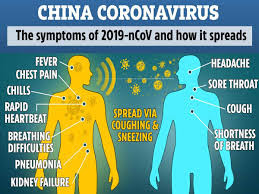Introduction
Generally, people tend to disregard the flue-like
symptoms as they want to visit neither hospital nor the doctor and take either
home remedies or self-prescribed medicines. Sometimes, this side-stepping the
warning symptoms may lead to serious complications if the appeared symptoms are
those arising out of COVID-19. If the people have contracted the coronavirus,
the time is ticking away for them as it may lead to serious complications after
4 or 5 days. The physicians who have studied this pandemic say that people need
to be extra vigilant regarding the types of symptoms that appear and their
timeline. In this article, let us see what the course of the virus is during an
infection in the human body.
Viral
Life Cycle
Like any other virus, the viral infection in the
human body subsides after 11-14 days in people with milder symptoms. However,
the situation turns worse in some patients after 5 days. Over the period of 5
days, the virus makes enough copies to infect the lungs. By this time, the body
would have started making the antibodies to stall the progress of the virus.
Typically, it is after the second day of infection the body starts making the
antibodies and generating symptoms such as cold, nasal block, throat aches,
chills, fever, body ache, etc. All the patients may not get all the symptoms
listed. Some may get a subset of them. The severity of the symptoms produced by
the body depends on the viral load and the extent of immunity built in the
body. The period of viral multiplication in the body is called the viraemic phase.
Viral
Infection Stages
According to health experts, the whole viral
infection can be divided into two phases. They are viraemic and non-viraemic
phases. They are described below for the benefit of the readers.
1. Viraemic Phase:
Typically, the viraemic phase lasts for 4-5 days. During the course of this phase, the body
starts making antibodies and generate different symptoms. The symptoms subside
after 5 days in most patients (80%). However, the situation spins out of
control in few patients (20%) after 5 days due to excessive immune response of
the body. Therefore, the patients should look for the worsening of symptoms
after the initial five-day period or viraemic period. By this time, the virus would
have made sufficient copies of itself in the human organs, especially the
lungs. In this phase, doctors prescribe medicines to control fever,
inflammations, and pain symptomatically.
2. Non-viraemic Phase: The worsening of the condition in this phase is mainly due to the overreaction of the immune cells of the human body, not because of the virus per se. The human immune system generally produces cytokines to arrest the progress of the viruses in the body. Generally, cytokine concentration is a measure of the viral load in the body. If the patients’ immunity is compromised due to some underlying condition, the viral load in their body would be exceedingly high, triggering a cytokine storm to arrest the viral progression. This results in severe inflammation in different parts of the body, especially those affected by the virus.
Symptoms Management
In the non-viraemic stage, the doctors
generally prescribe steroids and blood thinners to manage the situation. The
steroids are prescribed to mellow down the immune response, which in turn would
keep the cytokine concentration in the blood under control. Generally, the
COVID-19 generates blood clots in the body, which may precipitate serious
problems depending on the region where the clots have clogged the blood supply.
Hence, the physicians prescribe the blood thinner to manage the symptoms. Due
to the administration of the steroids, the body immunity will be compromised,
providing other microorganisms an opportunity to attack the human body. Typically,
the opportunists present in our body start invading it after 7 or 8 days.
Mostly, the lungs start getting affected due to the opportunistic infection, resulting
in pneumonia. There is a misconception in the minds of people that pneumonia mainly occurs due to the coronavirus. Pneumonia occurs after 7 or 8
days due to the bacterial infection, not due to the virus. In the non-viraemic
phase, the aggravation of symptoms is mainly due to the body’s immune response
and bacterial infection. Hence, the doctors prescribe the antibiotics also
in the anticipation of the bacterial infection.
Timeline for the Symptoms Management
So, the effective management of the COVID-19 can easily be achieved by timely prescription of medicines for the symptoms in the first and second phases. In the first phase, the medicines for the symptomatic treatment will be given to see whether the symptoms subside or not. The symptoms subside after 5 days in 80% of cases. Effective management in the second phase can be achieved by a combination of steroids, blood thinners, and antibiotics. Therefore, the precise onset time of the symptoms has to be determined by the patients and their relatives for effective disease management. At the time of the visit, the physicians ask this timeline to gauge the progress of the disease and prescribe the medicine accordingly. Thus, the determination of the milestones passed by the patients during the course of the disease largely helps them to avoid hospitalization with complications.


























